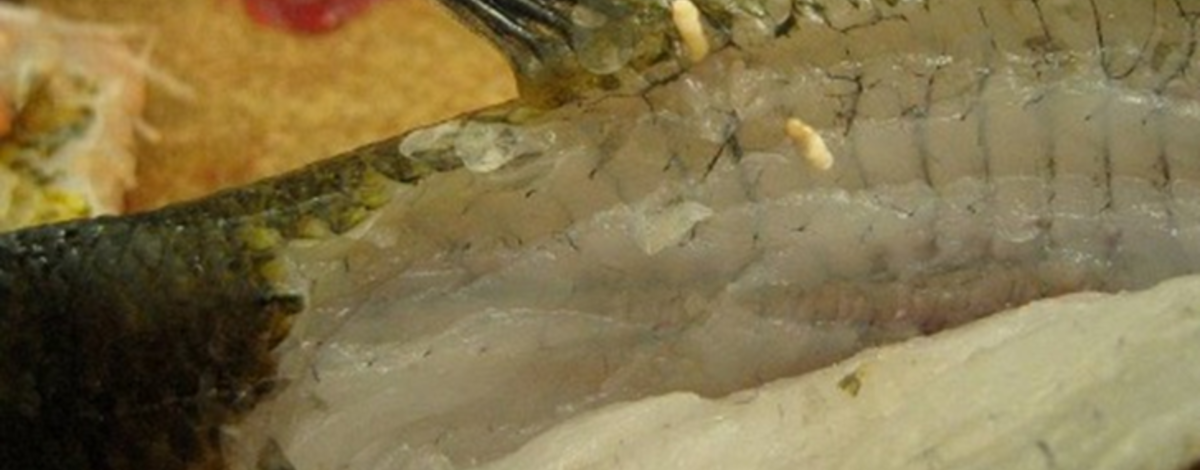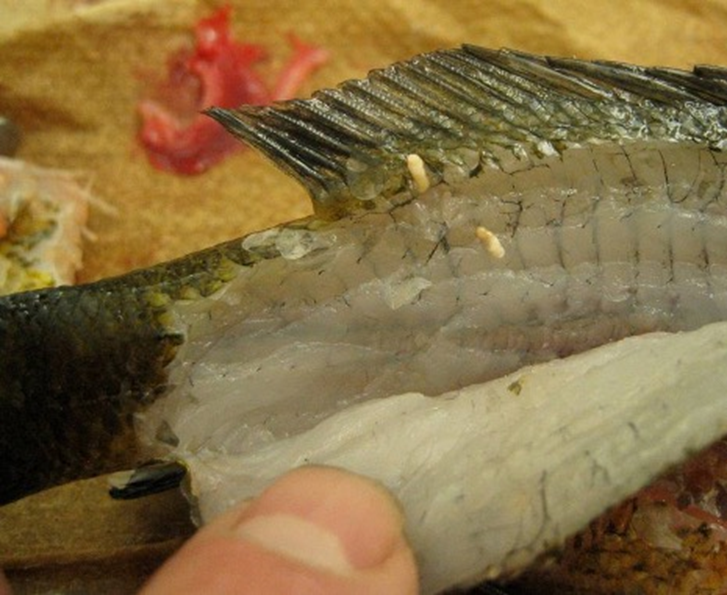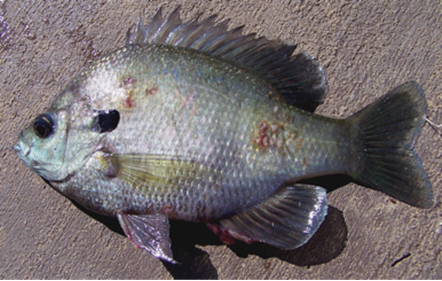After catching a small pile of bluegill at your favorite local fishing spot, you go home to start fileting. Your mouth is watering thinking of the soon to be fish tacos you’ll make. But as you cut into the first fish you notice a grub-looking worm in the meat, and wonder: What is that? Should you throw the fish out? What should you do?
Most likely you’ve just encountered a common panfish parasite called “Yellow Grub," and although it looks like something from an episode of FearFactor, we don’t recommend eating these raw.
Panfish with Yellow Grub disease are infected with tiny yellow or white “grubs” that reside in their meat. These yellow grubs host are in panfish because they ultimately need to get inside a fish-eating bird, like herons, to reproduce. Yellow grubs start out as juveniles in snails, which get eaten by panfish, which then get eaten by birds.



